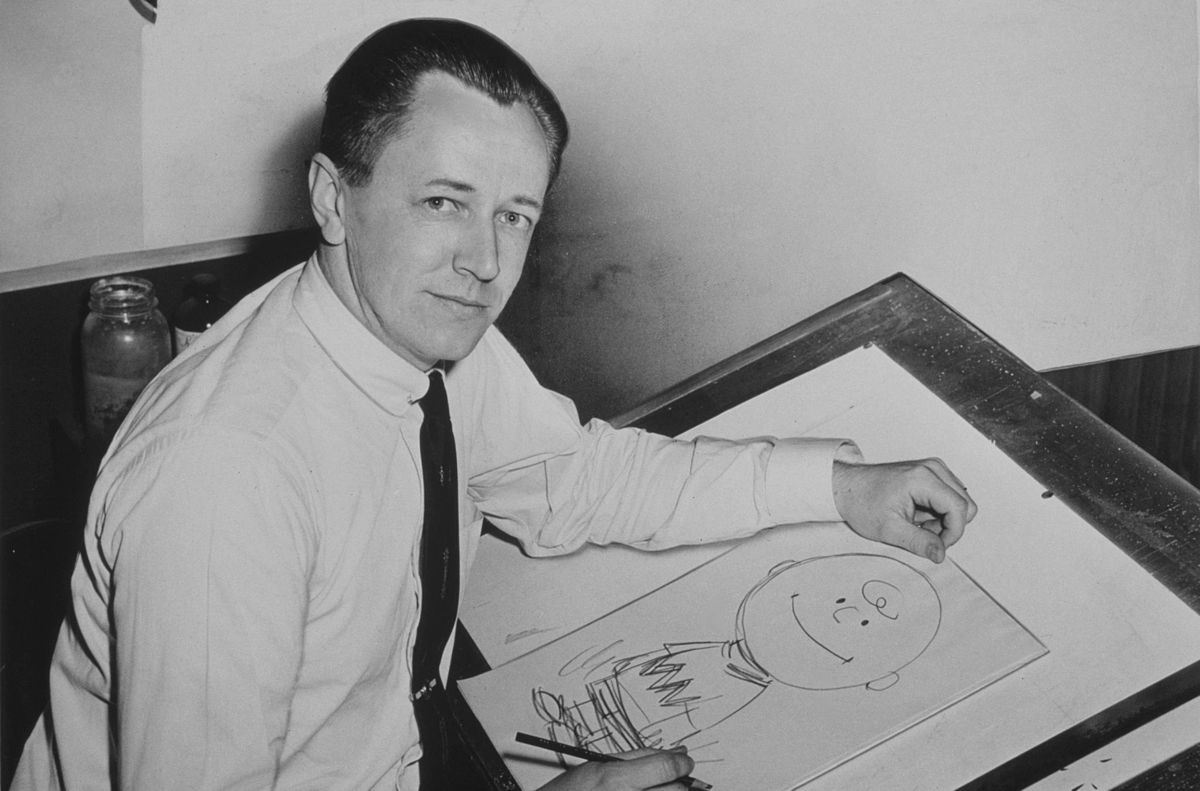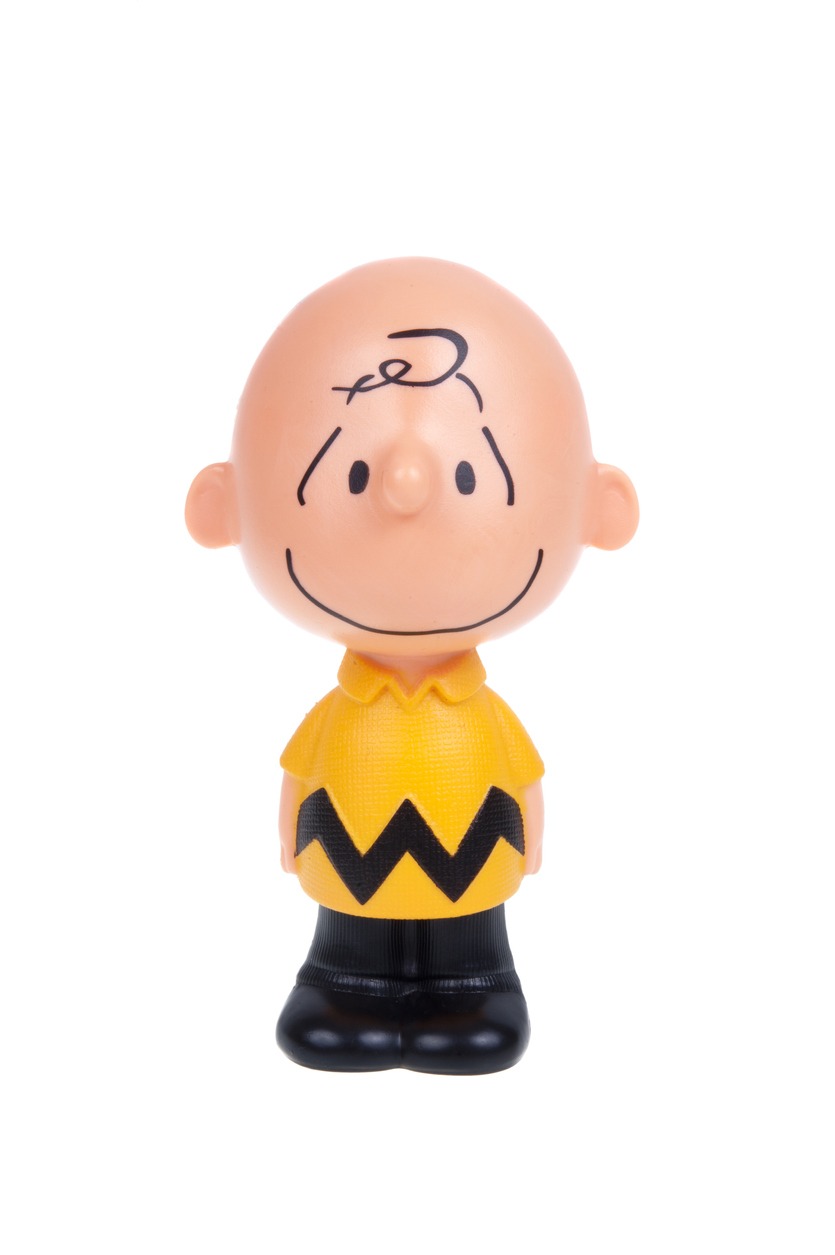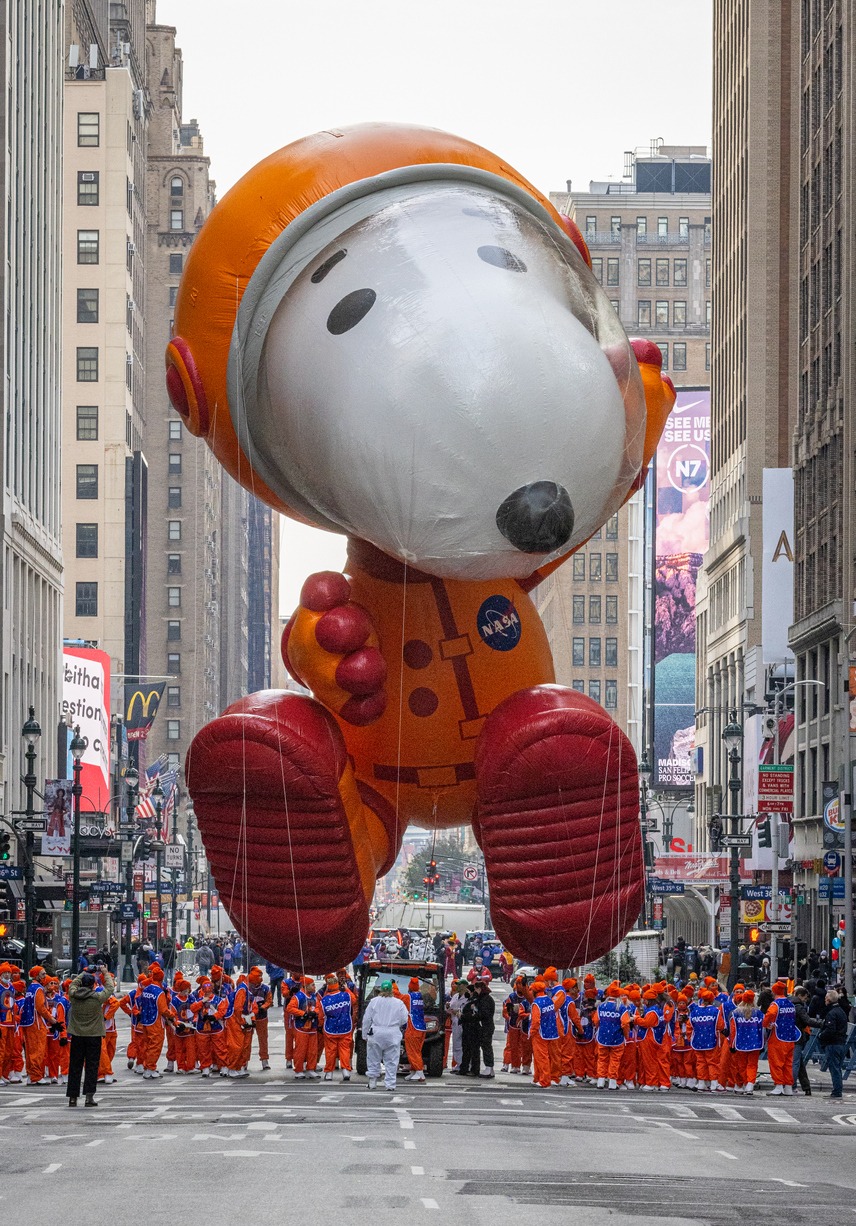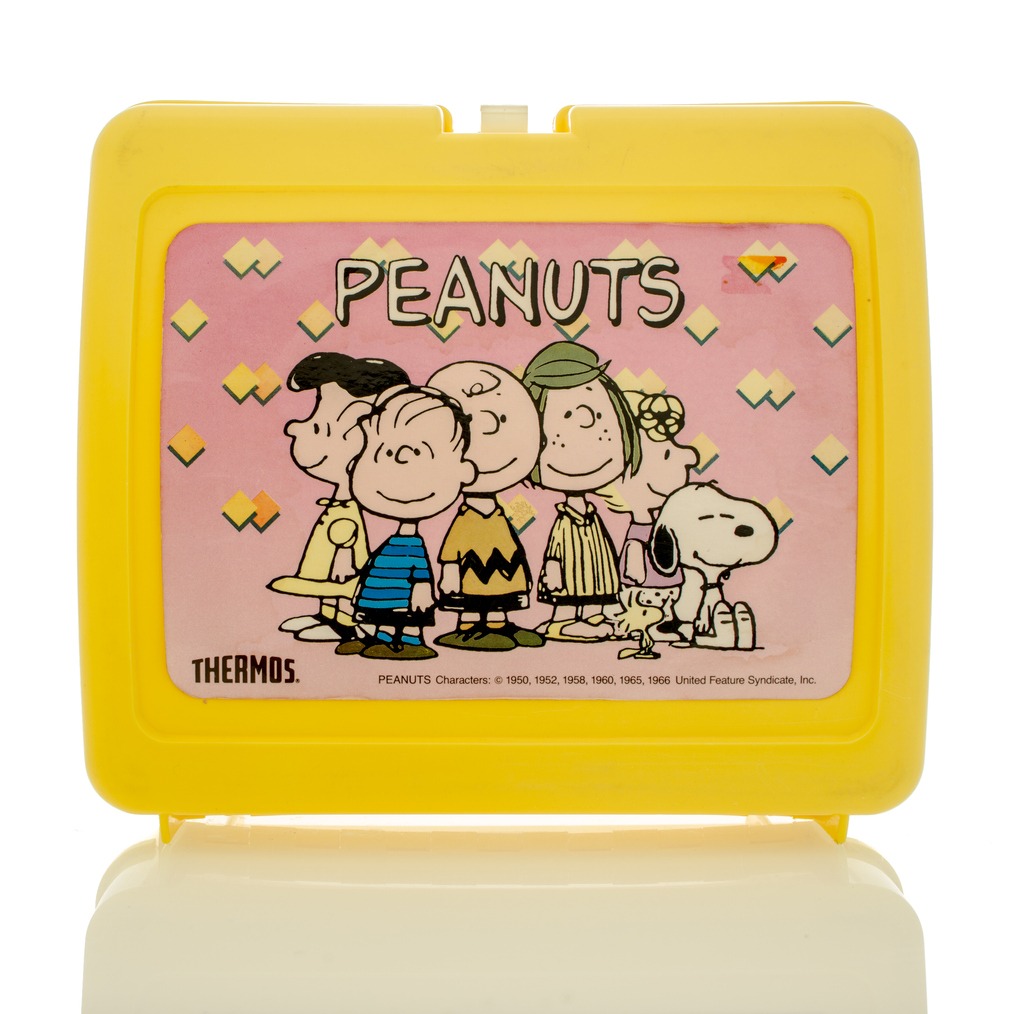Among the countless daily comic strips in the world, only a few are as memorable and as easily recognizable as Peanuts.
Charles Schulz’s Peanuts shines because of its cuteness and humor. It is undeniably one of the most iconic comic strips ever, and a big part of that credit goes to the adored beagle, Snoopy. Peanuts has been a joy for readers, not just for its cuteness or sweet humor but also its insightful philosophy. Characters like Linus, Lucy, Sally, and, of course, our pal Charlie Brown are practically known by everyone.
Join us as we explore Snoopy’s world by getting to know Peanuts, its creator, and the gang:
Peanuts: The Classic Comics Strip
Snoopy and Charlie Brown are part of the Peanuts universe – and you probably already know that. Created by Charles M. Schulz, Peanuts is a widely-loved American comic strip that ran daily and on Sundays from 1950 to 2000, continuing in reruns after that. It’s a comic strip with an impressive record of 17,897 published strips, earning the title of “arguably the longest story ever told by one human being.” Peanuts holds a special place in comic strip history and is often considered the grandfather of slice-of-life cartoons.
At its peak, Peanuts was a global sensation, running in over 2,600 newspapers in 75 countries, with a readership of about 355 million. Translated into 21 languages, it set the four-panel gag strip as the norm in the United States and brought Charles Schulz more than $1 billion in earnings.
The heart of Peanuts revolves around a group of young children, featuring the main character, the lovable but timid Charlie Brown. His adventures, or misadventures, include failed attempts at flying kites, winning baseball games, and kicking footballs, especially when Lucy is involved. In their world, adults exist but are seldom seen or heard.
Peanuts goes beyond typical comic strip humor. Schulz was infused with insightful philosophical elements, which was something new in the 1950s. The comic strip’s humor is psychologically rich, driven by the characters’ relationships and interactions. Because of that, the comic strip has been adapted into theater and animation.
For nearly 50 years, Schulz drew the strip without assistants – he even handled the lettering and coloring process himself.
The Creation and History of Peanuts
Born on November 26, 1922, in Minnesota, Charles M. Schulz developed a knack for sketching and drawing early on. When he was young, he sometimes drew his family dog, Spike, who had a knack for eating unusual things. When he was in high school, his drawings were rejected by his high school yearbook – an episode that he referred to in Peanuts later. After 60 years, a five-foot-tall statue of Snoopy was placed in the main office of his alma mater.
In 1947, Schulz first published his first group of regular cartoons, a weekly series of one-panel jokes named Li’l Folks. Featuring a cast of children, this comic strip was where Schulz first used the name Charlie Brown for a character, and it also had a dog that looked like Snoopy. He sold his one-panel drawing to The Saturday Evening Post in 1948.
In 1950, Schulz approached the United Feature Syndicate with his work, and the syndicate became interested. At that time, Schulz developed it into a comic strip using four panels, and the syndicate loved it. However, they had to change the title for legal reasons and chose Peanuts as a new name.
Peanuts made its grand debut in seven American newspapers on October 2, 1950. The characters – a lovable bunch including the eternally optimistic Charlie Brown, the philosophical Linus, the bossy Lucy, the musical Schroeder, and, of course, the beagle with attitude, Snoopy – struck a chord with readers. What started as a little comic strip soon snowballed into a cultural phenomenon.
One of the things that set Schulz apart was his commitment to authenticity. He drew inspiration from his own life – the highs, the lows, and everything in between. The result? Characters who weren’t just relatable; they were friends you could turn to in the Sunday funnies.
During its peak, Peanuts graced the pages of 2,600 newspapers across 75 countries, with translations in 21 languages. Over the course of almost five decades, Schulz created a whopping 17,897 published Peanuts strips. The immense success of the strips, coupled with merchandise and endorsements, generated annual revenues that surpassed $1 billion, and Schulz himself earned an estimated $30 million to $40 million each year.
As the years rolled on, Peanuts didn’t just stick to the comic strips. Realizing the potential of his creation, Schulz expanded Peanuts into animated specials, paving the way for classics like “A Charlie Brown Christmas” and “It’s the Great Pumpkin, Charlie Brown.” These specials weren’t just cartoons; they were annual traditions that brought families together, generation after generation.
Charles M. Schulz, with his trademark humility and a dash of Midwestern charm, continued to draw Peanuts until his retirement in 1999. That year, Schulz suffered several small strokes and a blocked aorta, which was later found to be colon cancer. Because of the treatment and his blurry eyesight, he decided to retire in December 1999, even if it was difficult for him to give up drawing Peanuts. Later on, he died in his sleep due to a heart attack on February 12, 2000, at age 77. His last original Peanuts strip was published the following day.
Throughout the strip’s impressive run, Schulz rarely took a breather. In fact, he only went on vacation once, enjoying a well-deserved five-week break in late 1997 to celebrate his 75th birthday. Since he was the only one drawing and conceptualizing the comic strip, newspapers released reruns of the strip during his vacation – the only time it happened during Schulz’s lifetime.
Exploring Peanuts and the Gang
The world of Peanuts revolves around characters, including:
1. Charlie Brown
Known as the eternal optimist, Charlie Brown remains optimistic despite a track record of failed baseball games, unrequited love from the Little Red-Haired Girl, and a kite that perpetually refuses to stay airborne. He does not become cynical and just keeps on moving forward even when things don’t go his way.
Charlie Brown’s resilience is what makes him special. He faces failure head-on, dusts himself off, and comes back for more. He also has a heart of gold – his compassionate nature made him stand by his friends, forgive Lucy for pulling the football away countless times, and care for his quirky beagle, Snoopy, with unwavering love.
One of Charlie Brown’s most relatable traits is his persistent self-doubt. Whether attempting to kick a football held by Lucy or stepping up to the pitcher’s mound, he grapples with a nagging sense of insecurity. Yet, in those moments, we see a bit of ourselves – imperfect, uncertain, but bravely pushing forward.
We can also see Charlie Brown as a great leader. While he may not be the flashiest, he’s the kind of guy you’d like to be with you during the storms of life. Whether managing the Christmas play or overseeing the gang’s adventures, he shows quiet leadership and determination.
2. Snoopy
Snoopy stands out in the comics as the enigmatic beagle. While he generally behaves like a dog, he connects to readers through his human-like thoughts and possesses many anthropomorphic traits.
First of all, he’s a dog with boundless imagination. He imagines himself as a college student named “Joe Cool,” a world-famous attorney and tennis pro. His vivid daydreams, often starting with, “It was a dark and stormy night,” shows his unique whimsy and humor.
Snoopy is also known for his aspiring career as a writer. With a typewriter in tow, he engages in epic battles with his arch-nemesis, the Red Baron, while crafting novels that, in his mind, rival the classics.
He can be selfish, lazy, and gluttonous at times – and he also likes to mock his owner, Charlie Brown – but as a whole, he’s a loving, caring, loyal dog (although he can’t even remember Charlie’s name).
3. Lucy van Pelt
Lucy is a force to be reckoned with. She’s got a bossy, no-nonsense vibe. Opinionated and not afraid to speak her mind, Lucy dishes out commentary with an honesty that can be both offensive and sarcastic.
Charles Schulz described Lucy as having a boatload of misdirected confidence but the virtue of slicing right through to the truth. She’s a bit mean, but Schulz believed it was all in good fun, especially because she’s a girl. Lucy’s got this unique side hustle as a makeshift psychiatrist, charging a nickel for her “psychiatric booth” advice – a lemonade stand parody that’s as comical as it gets.
4. Linus van Pelt
Linus, Lucy’s younger brother, brings a whole different vibe to the Peanuts universe. He’s the thinker, the ponderer, the guy with opinions on everything from literature and art to science and theology. Schulz loved how adaptable Linus was – he could be both “very smart” and a bit “dumb,” depending on the situation. Linus is all about those lofty ideas, but they often get a quick reality check. He’s got this moral compass that guides him through tricky topics like faith, intolerance, and depression.
But what makes Linus truly iconic? That would be his trusty “security blanket.” Schulz, drawing inspiration from his own kids, gave Linus this blanket symbolizing psychological security. The idea became so legendary that “security blanket” found its way into the dictionary.
5. Sally Brown
Sally, Charlie Brown’s younger sister, is a character full of innocence and charm. Her naive yet endearing perspective on life often leads to humorous situations. She habitually fractures the English language for comical effect and reacts negatively due to homework and school. But when it comes to speeches in oral exams, she delivers it with theatrics and suspense.
6. Schroeder
Schroeder is the musical maestro of Peanuts, often found passionately playing his piano. He’s a big fan of Beethoven and classical music. Despite his young age, he has a serious demeanor. He can also be recognized as the catcher on Charlie Brown’s baseball team and the romantic foil to Lucy’s unrequited love.
7. Woodstock
Snoopy’s feathered friend, Woodstock, may not speak in words, but his expressive chirps and actions convey various emotions. As Snoopy’s sidekick, Woodstock brings a whimsical and lighthearted energy to the strip.
8. Peppermint Patty
Peppermint Patty attends a different school on the other side of town. She is a tomboy with a no-nonsense attitude and unwavering loyalty. She’s got what Schulz called a “devastating singleness of purpose,” meaning when Patty sets her mind on something, you better believe she’s going for it. But she often finds herself in hilarious misunderstandings. She also usually struggles a bit in school and with homework.
9. Marcie
Marcie is friends with Peppermint Patty. She’s the bookish brainiac of the pair, acing her studies and rocking those glasses with style. Schulz painted her as perceptive, the one who “sees the truth in things.” Despite her insightful nature, she addresses Peppermint Patty as “sir” perpetually.
Marcie is dubbed as “the unassuming one with sage-like insights.” So, while Peppermint Patty might be the bold and forthright one, Marcie brings a subtle wisdom to the table.
10. Pig-Pen
With his perpetual cloud of dust, Pig-Pen is a character whose defining trait is his untidiness. Despite his consistently messy appearance, Pig-Pen is a friendly and good-natured member of the Peanuts gang.
11. Rerun Van Pelt
Rerun, the youngest brother of Linus and Lucy, is a character introduced later in the strip. Despite his age, Rerun exhibits a level of wisdom and wit, often engaging in amusing conversations with his older siblings.
12. The Little Red-Haired Girl
The Little Red-Haired Girl is an elusive character who serves as the object of Charlie Brown’s affection. While she remains mostly in the background, her presence symbolizes Charlie Brown’s perennial pursuit of love. Schulz decided never to show the face of Charlie Brown’s crush to leave her appearance to the readers’ imagination. He intended to make her a more universal object of affection and create a sense of mystery.
Peanuts Animated Specials
Peanuts have been adapted into more than 50 animated specials since 1965, most of them released on TV. Here are some of the most iconic ones:
1. A Charlie Brown Christmas
This is the timeless classic that started it all. “A Charlie Brown Christmas” isn’t just a holiday special; it’s a cultural phenomenon. First aired in 1965, this heartwarming tale revolves around Charlie Brown’s quest to understand the true meaning of Christmas. With Vince Guaraldi’s unforgettable jazz soundtrack and Snoopy’s funky dance moves, it has become an essential part of the festive season.
Fun fact: Schulz initially faced resistance when he insisted on including the Bible passage in the special, where Linus recites during the iconic moment where he explains the true meaning of Christmas. Schulz held his ground, and the scene became one of the show’s most memorable and cherished moments.
2. It’s the Great Pumpkin, Charlie Brown
“It’s the Great Pumpkin, Charlie Brown” is a Halloween tradition that follows the gang as they navigate trick-or-treating and Linus’s unwavering belief in the Great Pumpkin. This 1966 special captures the essence of Halloween with humor and heart.
3. A Charlie Brown Thanksgiving
“A Charlie Brown Thanksgiving” first aired in 1973, showcasing the gang’s attempt to put together a memorable holiday celebration. From unconventional menus to unexpected guests, this special serves up laughter, mishaps, and a hearty dose of gratitude.
Other Peanuts specials include “Charlie Brown’s All Stars!” (1966), “You’re in Love, Charlie Brown” (1967), and “Be My Valentine, Charlie Brown” (1975), among others.
Peanuts Legacy and Fan Culture
Charlie Brown and his pals did not just win the hearts of readers and viewers; they’ve created a lasting legacy in the hearts of fans around the globe.
Peanuts has this unique, remarkable ability to appeal to many generations. Fans who grew up reading the comic strips in newspapers eagerly pass on their love for Charlie Brown and Snoopy to their children and grandchildren. Because the characters are relatable and the themes are timeless, Peanuts remained popular through the decades.
Here’s how Charles Schulz’s creation has rippled through the decades and became a household name and a pop culture staple:
1. Merchandise
The Peanuts gang has transcended the pages of comic strips and animated specials and became licensed for use on merchandise. Ever had a Snoopy bag or a Peanuts lunch box for school? The cuteness of the Peanuts gang made them merchandise-worthy. From plush toys and clothing to school supplies and home decor, Peanuts merch continues to fly off the shelves.
2. Events and celebrations
Peanuts-themed events and celebrations, from museum exhibitions to anniversary commemorations, draw crowds of fans eager to immerse themselves in the world of Charlie Brown. These gatherings not only celebrate the legacy of Peanuts but also create new memories for fans of all ages.
3. Macy’s Thanksgiving Day Parade and Super Bowl appearances
Since 1968, gigantic Snoopy, Charlie Brown, and Woodstock balloons have been stealing the show at Macy’s Thanksgiving Day Parade. This was referenced in a 2008 Super Bowl commercial for Coca-Cola, in which the Charlie Brown balloon snags a bottle of Coke from two battling balloons.
4. Space Odyssey with NASA
Snoopy became NASA’s safety mascot in 1968. Astronauts even received the prestigious Silver Snoopy Award for promoting flight safety. The Apollo 10 mission even named their modules the beloved duo – their lunar module’s call sign was Snoopy, and the command module’s was Charlie Brown.
5. Enduring impact on cartoonists
The Comics Journal dedicated an issue to Peanuts in 1997, featuring testimonials from over 40 cartoonists. The likes of Gilbert Hernandez and Tom Batiuk poured their hearts out, praising Schulz’s influence on the craft and the emotional depth Peanuts brought to the comic world.
When Schulz passed away in 2000, cartoon tributes kept pouring in. Cartoonists collaborated to include references to Peanuts in their strips. Then, on November 26, 2022, cartoonists celebrated Schulz’s 100th birthday with heartfelt references to Peanuts in their strips. A timeless tribute to a comic maestro!
6. Postage stamp recognition
Even the U.S. Postal Service couldn’t resist the magic of Peanuts. From a Flying Ace Snoopy stamp in 2001 to a forever stamp featuring “A Charlie Brown Christmas” in 2015, they’ve commemorated the gang. In 2022, stamps honored Charles Schulz’s 100th birthday, standing alongside his beloved characters.
7. Charles M. Schulz Airport
Santa Rosa, California, took a special step in 2001 by renaming the airport to Charles M. Schulz Airport. Snoopy, decked out as the World War I Flying Ace, adorns the airport’s logo, flying high atop his red doghouse.
8. Memorable quotes and catchphrases that became part of popular culture
Peanuts also became a treasure trove of unforgettable quotes and catchphrases that have seeped into the collective consciousness of popular culture. Some of these – which originated from Peanuts – include:
- Good grief – Charlie Brown’s signature expression of exasperation became a go-to phrase for people feeling the same way.
- Security blanket – Linus’ trusty blanket gave rise to the concept of a “security blanket,” pertaining to an object or routine that offers solace in times of stress. It has found its way to the common language.
- The Great Pumpkin – Linus’s belief in the Great Pumpkin has become synonymous with unwavering faith in the face of skepticism. The phrase is often invoked to describe someone who holds steadfast to a belief, no matter how improbable it may seem to others.
- Charlie Brown Christmas tree – The image of Charlie Brown’s sparse, droopy Christmas tree has become a symbol of the holiday season’s simplicity and authenticity. The phrase is used to describe beauty in something imperfect.
Takeaway
Peanuts isn’t just a comic strip; it’s a cultural phenomenon that continues to touch hearts, inspire, and bring joy across generations. So, here’s to Mr. Schulz and his creations: Snoopy, Charlie Brown, and the entire gang – their legacy is as heartwarming as a Charlie Brown Christmas!






